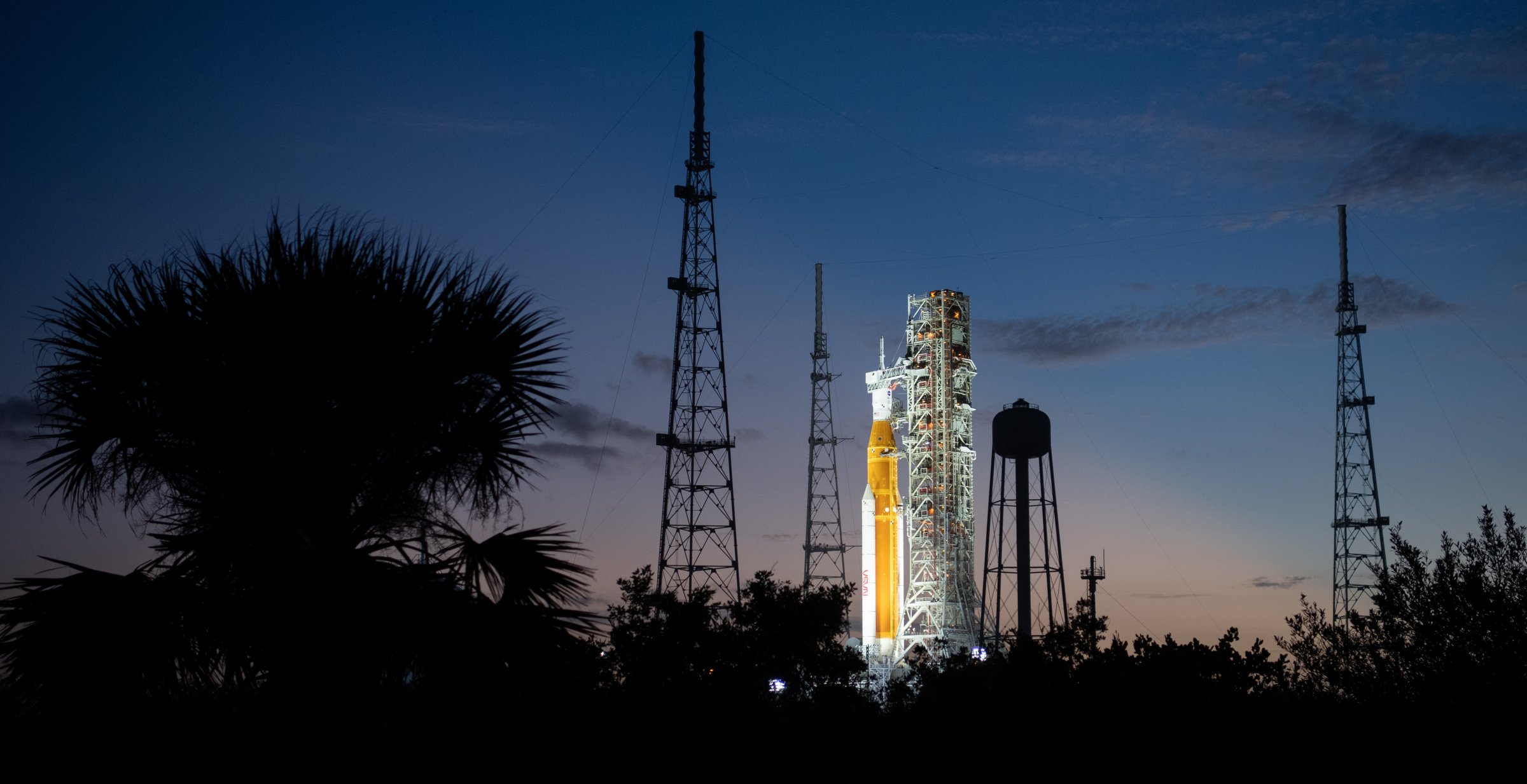
If you owned a 32-story, 2.6 million kg (5.7 million lb), $4.1 billion moon rocket, the last thing you’d think you’d want to do is leave it out in a hurricane. Well, NASA does own a 32-story, 2.6 million kg, $4.1 billion moon rocket and leaving it out in a hurricane is just what the agency did yesterday—mostly because that turned out to be the best and safest of a bad lot of options. As this morning dawned, it looked like the gamble paid off.
The moon rocket, officially known as the Space Launch System (SLS), is currently set to launch in the early morning hours of Nov. 16, marking the beginning of the Artemis 1 lunar orbital mission. In preparation, the SLS began rolling out to its Florida launch pad last week, making the creeping, 4 mi. (6.4 km) trip from its Vehicle Assembly Building (VAB) hangar in just over 12 hours, and taking its position on pad 39B in the early morning of Nov. 4.
At the time, the rocket’s planned launch date was Nov. 14, but on Nov. 7, the National Weather Service detected Tropical Storm Nicole forming in the Atlantic. It was yet another unlucky break for the SLS, which already missed two launch attempts before—in August and early September—due to technical glitches. Then, on Sept. 27, NASA had to hightail the rocket off of the launchpad and head for safety in the VAB when Hurricane Ian approached Florida.
But Nicole was no Ian; not only was the storm weaker than the September hurricane, its early track had it missing the Kennedy Space Center (KSC) by a wide berth. Nicole grew quickly, however, and shifted course. By Nov. 8, it was strengthening to what would eventually be a Category 1 storm—one that was aiming for landfall just 112 km (70 mi.) south of the Cape Canaveral region, plenty close enough to cause high winds and heavy rains at the space center.
As NASA reports, the KSC team immediately went to what it calls HURCON (Hurricane Condition) 3 status. This meant locking down space center facilities, evacuating non-essential personnel, and leaving in place only a “ride-out team”—a skeleton staff on-site to monitor conditions and tend to emergencies. As for the rocket, the KSC team had a choice. As CBS, CNN, and others report, the SLS is certified to withstand winds as high as 136 km/hr (85 mph), but only if it is secured to its gantry on the launch pad. If it made the 12-hour trip back to the VAB, it would only be able to tolerate winds of just over half that without facing the risk of damage or even toppling in the 74 to 95 mph Category 1 gusts. The decision was thus made to leave it exactly where it was.
“The team decided the launch pad was the safest place for the rocket,” said NASA associate administrator Jim Free, in a statement posted on Twitter.
The team turned out to be right. After the storm passed—it made landfall with maximum sustained winds of 75 mph—technicians scrambled to the pad. They discovered only minimal damage Friday morning: some loose insulation caulk, and some tears in the weather coverings placed over the upper portion of the rocket body. Inspections will continue throughout the day, but for now it appears the snake-bit SLS at last caught a break. As of this morning, the launch remains on schedule for next Wednesday and NASA’s Artemis program—the country’s first attempt to return astronauts to the moon in half a century—remains on track.
More Must-Reads from TIME
- Inside Elon Musk’s War on Washington
- Meet the 2025 Women of the Year
- The Harsh Truth About Disability Inclusion
- Why Do More Young Adults Have Cancer?
- Colman Domingo Leads With Radical Love
- How to Get Better at Doing Things Alone
- Cecily Strong on Goober the Clown
- Column: The Rise of America’s Broligarchy
Write to Jeffrey Kluger at jeffrey.kluger@time.com